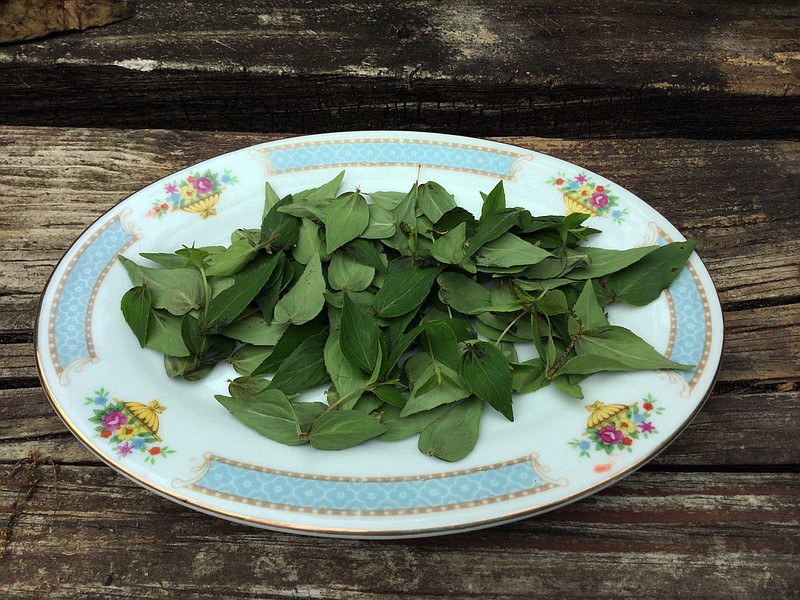If you would like to add a burst of flavor to sauces and stews - especially in recipes that call for oregano - dittany is your friend.
Also known as sweet horsemint, stonemint or wild oregano, dittany is a native plant common in acidic soils that does well in average garden soils. It is usually overlooked because of its low height, which can be from 1-1.5 feet, with very thin and widely branched stems. The crown is round and can extend to 2 feet in diameter.
At Lincoln University, we have used dittany to replace oregano in various recipes, including Salvadoran cole slaw, dips, and a sauce to serve on chicken or other meats, among others. The leaves can also be used to prepare a refreshing tea.
Billy Joe Tatum in her "Wild Foods Cookbook and Field Guide" mentions the use of dittany flowers and leaves, fresh or dry, to be gathered in the summer and in the fall. Its scientific name, Cunila origanoides, refers to the aroma's similarity to oregano. Different than its introduced relatives spearmint and mint, dittany does not spread from rhizomes or horizontal underground stems. It does not compete well with taller vegetation.
Dittany is an attractive but delicate plant that can be used in small garden beds in poor soil. Mervin Wallace, owner of Missouri Wildflowers Nursery in Brazito, recommends dittany as a plant that does well in pots under moderate shade to full sun. Dittany is native in about half of Missouri in southern, central and east-central counties. It is found throughout the Ozarks.
The tiny seed can be harvested in the fall and needs a period of six weeks or longer of cold and moisture to germinate.
Dittany is a perennial plant that is easy to keep in gardens. It becomes dormant in the winter and sprouts again in late spring. There is no need to fertilize or irrigate, even during the heat of summer.
Dittany is naturally found in open and dry woodlands. The pink flowers appear from July to late fall, attracting tiny native bees and other pollinators.
An interesting fact about dittany is it is one of the few plants that form frost-flowers, according to Edgard Edison's "Missouri Wildflowers." Frost-flowers are ribbons of frozen sap that form at the bases of certain plants during the first hard freezes in fall. They can form beautiful shapes, like small sculptures.
Dittany has taste, looks and artistic abilities. What more could you ask for an undemanding addition to your native garden?
Nadia Navarrete-Tindall is an associate professor and native plant specialist for the Lincoln University Cooperative Extension. The Native Plants Program provides educational tools to students and the public on how to identify, grow and market native edible plants and those that are important to pollinators.
____
Dittany Oat Crackers
2-3 tablespoons chopped dittany leaves
1/3 cup buttermilk
1 stick salted butter
1 cup rolled oats
1 egg white (small)
1 cup whole wheat flour
1 cup wheat germ
1 cup sugar
1 teaspoon baking soda
1 teaspoon salt
In a medium bowl, melt the butter in the microwave, remove and stir in the buttermilk. Set aside. In a big bowl, mix oats, flour, sugar, salt, baking soda and wheat germ. Add butter mixture and egg white to the flour mixture and blend with your hands. If the mixture crumbles, sprinkle a little water. When a soft dough forms divide it in two balls. Set aside for 10-20 minutes.
Heat the oven to 325 degrees. On a floured surface with a floured rolling pin, roll out one ball of dough about 1/8-inch thick. Cut the dough in strips to make square, triangular or any shape you like.
Transfer crackers to a not-buttered baking sheet, bake for 15 minutes or until the edges of the crackers are golden brown. Do the same with the second dough ball. Let the crackers cool and serve or store in an airtight container. Try them with sumac jelly or wild plum jam.
Makes 24-36 crackers, depending on the size.



